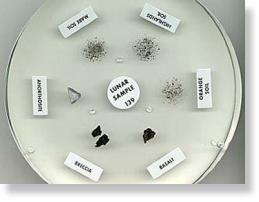
The space agency has lost or misplaced more than 500 pieces of the lunar rocks and other space samples, NASA's inspector general reported Thursday, making the case for better inventory controls.
Astronauts on the Apollo moon landings from 1969 to 1972 returned 842 pounds of lunar rock and soil to Earth. The space agency now loans samples, along with meteorite and comet dust, to about 377 researchers worldwide.
The space agency now lists 517 moon rock samples as missing or stolen.
However, the inspector general audit suggests much more is missing, based on inquiries to a sample of 59 scholars loaned moon rocks, comet dust or meteorites. The audit found 19% could not locate all of their samples.
It isn't a new problem. NASA Administrator Thomas Paine threatened "waving heavy cudgels" at researchers who lost samples in a 1970 Congressional hearing.
The latest audit suggests professors remain absent-minded with moon rocks. "Records were inaccurate, researchers could not account for all samples loaned to them, and researchers held samples for extended periods without performing research," the report says. Among the problems:
- Hundreds of samples that had been destroyed show up in NASA records as existing. And samples loaned to 12 researchers "who had died, retired or relocated" were never returned.
- Only about 70% of researchers replied to the most recent moon rock inventory conducted in 2008.
- Asked when they last used the moon rock samples, researchers replied an average of 15 years. One researcher had kept a sample unused for 35 years.
Overall the space agency lists 26,000 moon rocks and other "astromaterials" such as meteorites loaned to schools, museums and researchers. "To put this in perspective, losses of Apollo samples have amounted to less than one hundredth of 1 percent of the returned samples over 40 years of intense research," Brown said.



Reader Comments
This website is a manufactured website to promote a movie. Apollo 18.